Stablecoins have been added to traditional assets from a fiat list: dollars, euros, and gold. These are cryptocurrencies pegged to the exchange rate of major world currencies. Each of them has its own binding mechanisms and features. Today, we’ll tell you what stablecoins are, why you should buy them, and how to use them effectively. Let’s get started!
What Are Stablecoins?
Before telling what popular stablecoins are, let’s recall what these cryptocurrencies are and what stablecoins are all about. In the vast majority of cases, the US dollar acts as a denomination of a stablecoin, and in this case, 1 stablecoin is equal to $1.
The idea of creators of such a ‘gold standard’ is that the exchange rate of stablecoins repeats the movement of a pegged currency and does not demonstrate price jumps typical for the main currency of the crypto world — bitcoin.
Why is it good for a private investor or for an exchange user who decides to transfer their capital from one country to another? Because this coin retains its rate regardless of the state of the cryptocurrency markets. The markets are falling – a stablecoin maintains its rate, the markets are rising — the coin price remains unchanged.
At the same time, there are centralized stablecoins and decentralized ones, but this principle is maintained regardless of the chosen strategy.
Advantages and Disadvantages of Stablecoins
In addition to resistance to cryptocurrency market fluctuations and stability of peg to the base currency, stablecoins have another important advantage. They demonstrate resistance to hacker attacks, which no major cryptocurrency exchange is immune from.
Stablecoin reserves are securely stored in a special depository, so you should not be afraid of hacking or fraudulent actions in relation to user savings. Meanwhile, the obvious advantage turns into a serious disadvantage of stablecoins.
All savings are stored on servers of third parties, and these third parties can simply disappear with the money. That’s why all experts advise owners of stablecoins to be very careful and balanced in choosing a guarantor.
Moreover, it must be admitted that usually, an ordinary bank, directly dependent on the actions of regulators, acts as a vault. Thus, an owner of a centralized stablecoin will have to give up on such an extremely important criterion as anonymity.
The Most Reliable Stablecoins
The most popular stablecoins are TrueUSD (TUSD), USD Tether (USDT), USD Coin (USDC), Paxos Standard (PAX), Gemini Dollar (GUSD), and Bitcoin Air (USDAP).
The very first, most reliable stablecoin Tether (USDT), opens our top. This cryptocurrency ranks third in terms of market cap and ranks first in terms of a daily trading volume. Thus, this coin’s total volume of transactions exceeds several tens of billions of dollars.
The undoubted advantage of Tether is maintaining a tight peg to the dollar even during periods of market crises. In addition, this cryptocurrency has high liquidity, which is good for both ordinary users and traders working with large trading volumes. Almost all well-known cryptocurrency exchanges with a high user trust rating work with Tether.
If you’re wondering where to buy USDT, you should definitely think about buying it at Switchere. On our platform, you have an opportunity to buy USDT in the fastest and most convenient ways using any available payment method. Moreover, we offer some surprising bonuses! Users of our platform enjoy a 0% service fee for the first order.
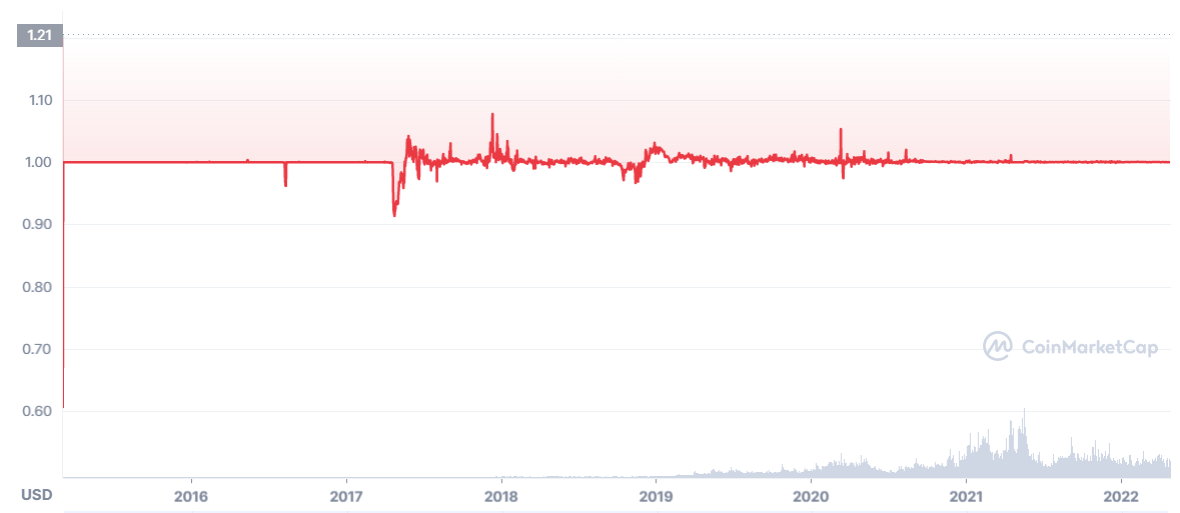
List of Best Stablecoins: Tether Competitors
Tether’s competitor, traditionally included in any list of popular stablecoins, is USD Coin, which appeared in 2018. It was invented and launched by the exchange consortium Coinbase and the Circle blockchain corporation, a blockchain holding led by one of the world’s largest investment banks Goldman Sachs, which also owns the Poloniex exchange.
USD Coin (USDC)
The USDC stablecoin is based on the Ethereum blockchain. That is, these are ERC20 tokens that are quite easy to integrate with smart contracts on the same blockchain.
Among the advantages are confirmed reserves, which are contained in escrow accounts, and the high liquidity of the coin when transferring funds to fiat and vice versa.
According to experts, the centralization and control of financial flows by Coinbase and Circle can be considered a certain disadvantage of a stablecoin. But this disadvantage is offset by the high level of transparency of the cryptocurrency, which Tether can’t boast.
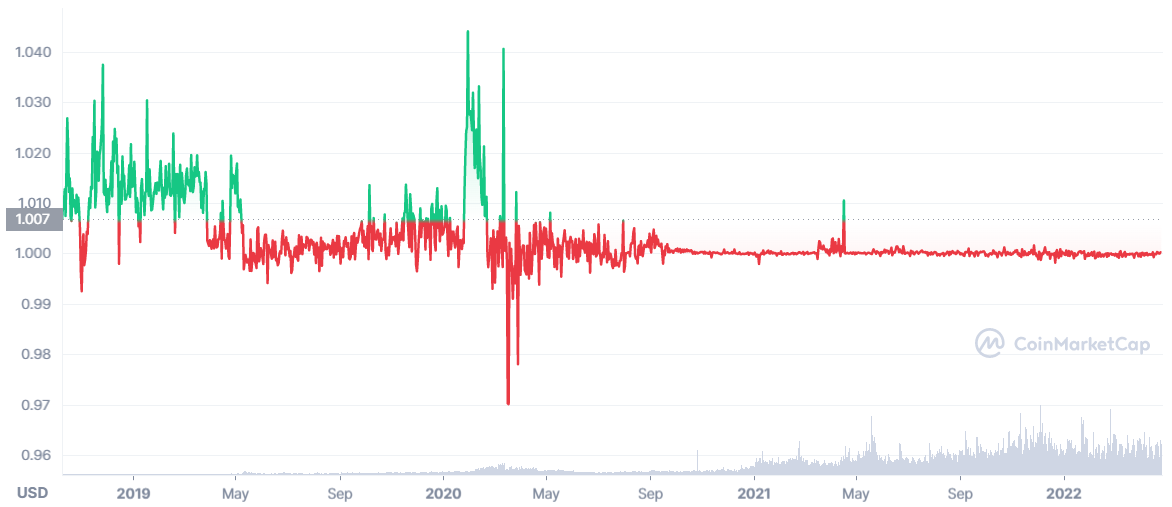
TrueUSD (TUSD)
All experts willingly include TUSD in the top three dollar stablecoins, which was born in the winter of 2018. It is reliable, liquid, and absolutely transparent. The issuer of the token is TrustToken. The dollar equivalent backs the reserves of this cryptocurrency in the form of fiat currency at a ratio of 1:1. Unlike competitors, TUSD constantly conducts audits and reports on the current status of reserves, which any asset owner can view.
The creators of the cryptocurrency promise traders to open access to monitoring systems that will allow them to receive online all the information about the state of the reserve fund. Soon, traders will also be able to access a dashboard that will provide real-time updates on the status of USD reserves for TUSD.
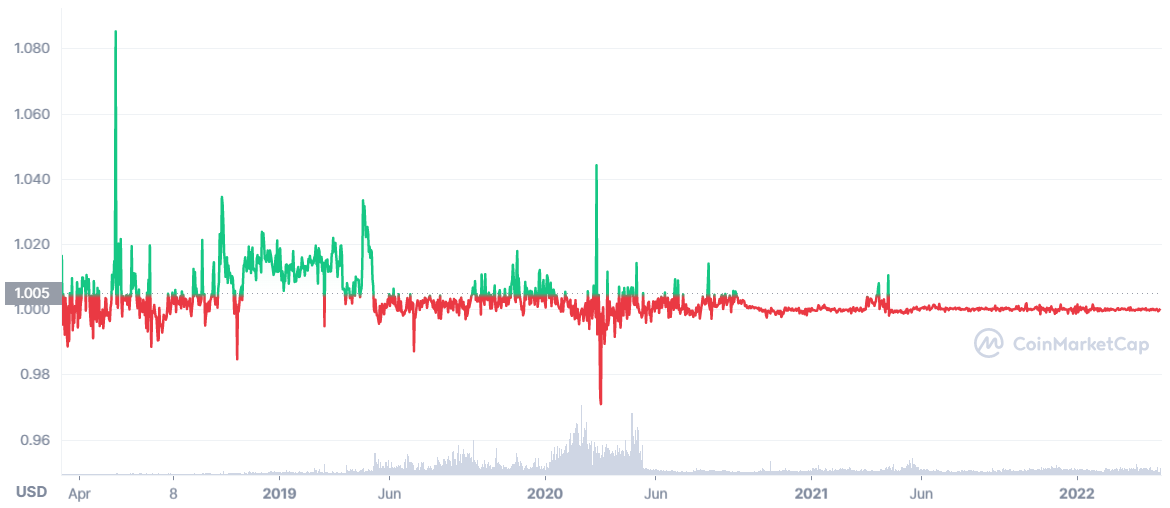
Pax Dollar (USDP)
According to experts, most often, stablecoins are issued by exchanges — this is both a tool for increasing user attention and a project that will help attract long-term investors. Such projects include the Pax token from Paxos, which has owned the itBit exchange platform headquartered in Singapore for more than 10 years.
Like many other stablecoins, the coin was launched in 2018. PAX is in the top fifty in terms of market cap. In terms of functionality, everything is pretty standard — the cryptocurrency is pegged one to one to the US dollar, and all reserves are backed by US currency.
The project team conducts annual audits of backup storages and monitors the full compliance of the number of tokens with the amount of US dollars assigned to them. The PAX coin is actively traded on more than 70 exchanges and is represented on the main exchange of the project creators — itBit. It is clear that the asset holders can almost instantly and without commissions, exchange it for fiat or other cryptocurrencies. It is enough to create an account on the exchange to do this.

CACHE Gold (CGT)
Experts advise diversifying long-term stablecoin portfolios with gold-pegged coins to hedge dollar risks. All of these coins are pegged to investment-grade gold and are highly liquid.
CACHE Gold (CGT) stands out among the gold stablecoins. The equivalent of each such coin is one gram of pure gold, which can be exchanged for this noble metal at any time.
Tether (XAUt) and PAX (PAXG) are also in the top three popular gold stablecoins, and their mechanism of operation is similar to that of CACHE gold (CGT) — still, they are tied to a troy gold ounce. A certain disadvantage is a rather high minimum entry threshold. However, CACHE does not have this problem.
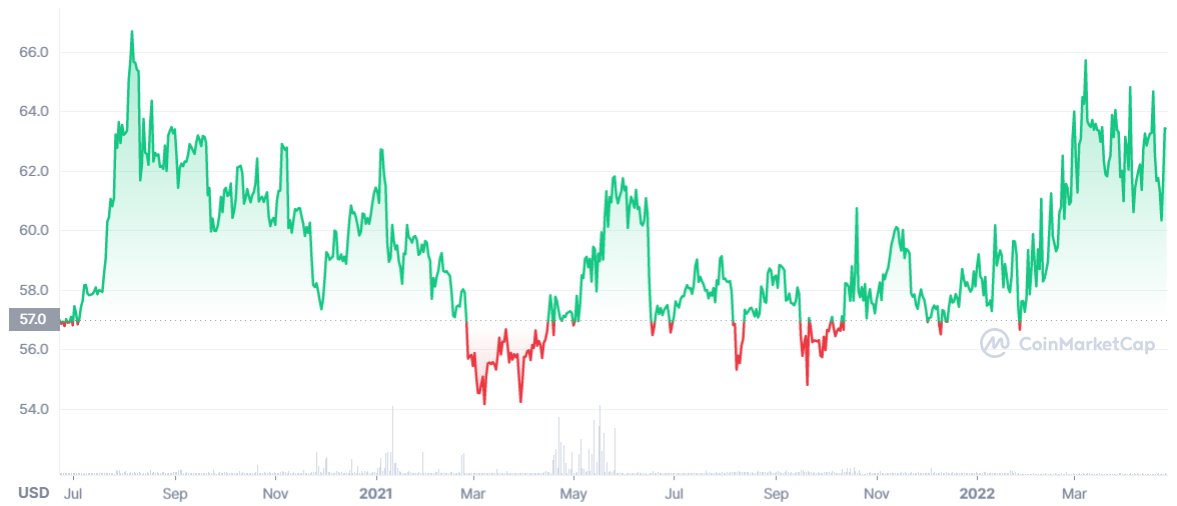
DAO Maker (DAO)
DAO Maker stablecoin belongs to the second type of stablecoins. Instead of being tied to strong fiat currencies, these ones are backed by the world’s most stable cryptocurrencies: bitcoin, litecoin, and ether.
DAO leads the ranking of the most attractive cryptocurrency stablecoins. If we talk about the advantages of owning or using such assets, then it is worth noting decentralization, ease of exchange operations, and a stable rate of tokens.
The disadvantages include high volatility, which the undisputed leaders of the crypto rating are also subject to, the burn of tokens during a deep fall, and the need for excess capital values. It is also worth noting the impossibility of instant conversion to fiat. Thus, to make an exchange, you will first have to turn your token into a peg coin (bitcoin, litecoin, ether) and only then convert it into cash while selling. It is clear that this path involves the payment of commissions.
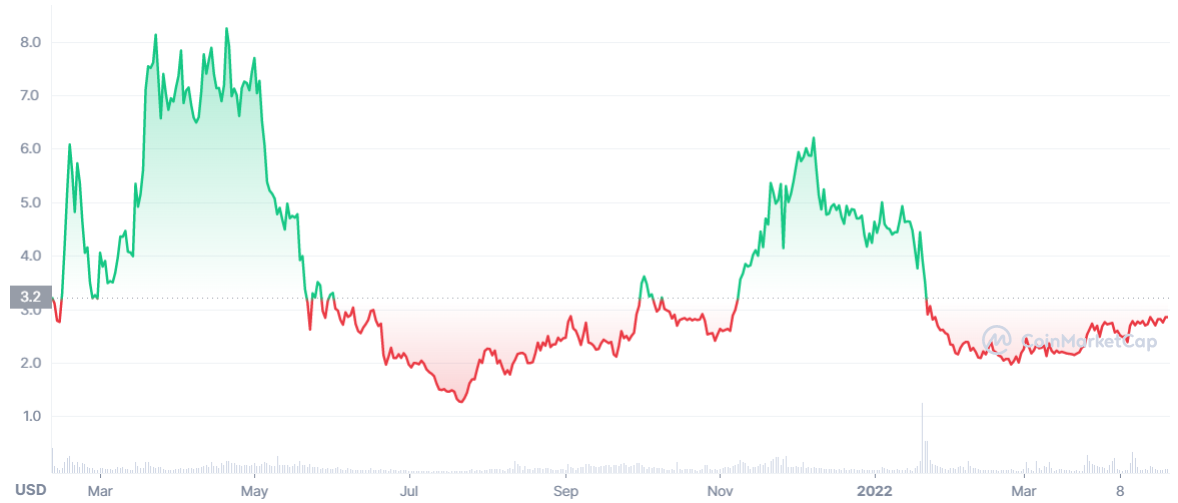
What stablecoins do you own? Feel free to share your portfolio in the comments below!
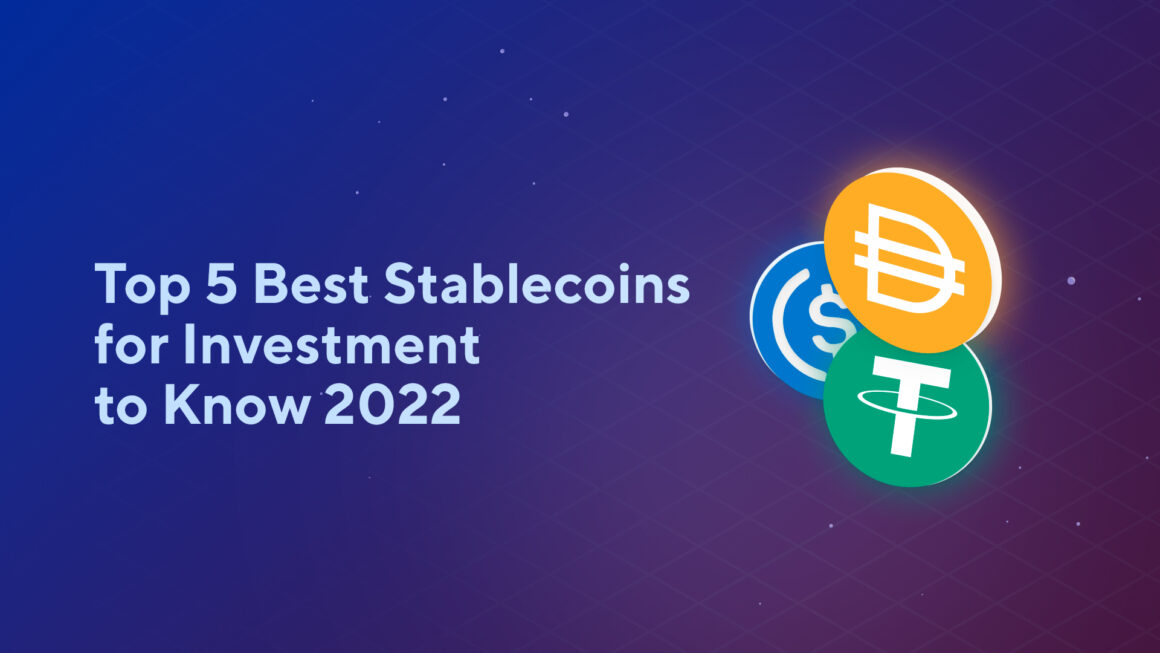
Leave a Reply